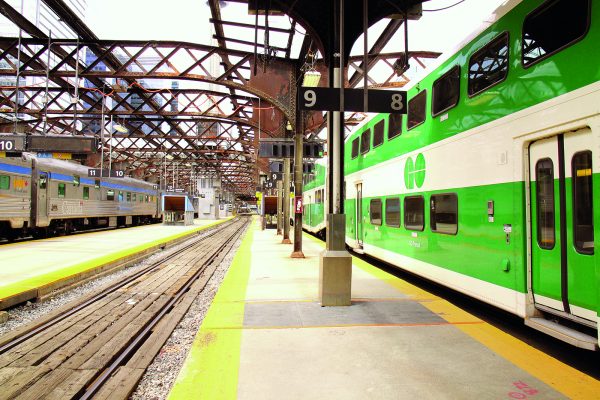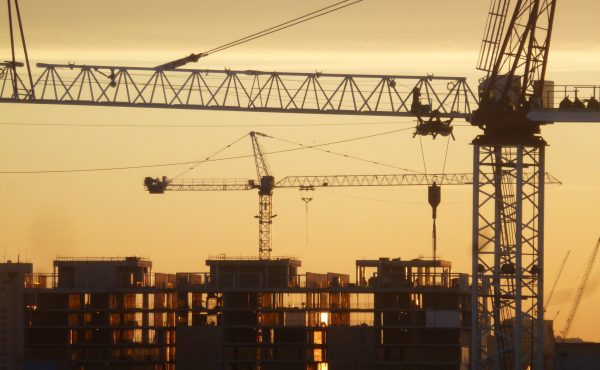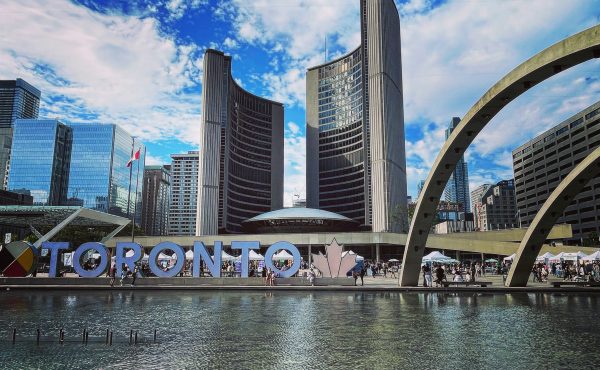Among all the forms of magical thinking that infect the region’s political culture, none are as pernicious — or persistent — as the myth of free transit.
Once every few years, the purveyors of Big Solutions trot out some confection of governance shuffles, privatizations, agency mergers, or complicated-sounding revenue generating tools that wring vast troves of capital out of transit corridor up-zoning processes and land deals around stations.
In the mid- to late-1990s, former mayor Mel Lastman promised to underwrite the Sheppard subway using land value capture levies along the corridor, although that pledge mysteriously evaporated.
On the hustings in 2010, Rob Ford assured voters that he would build all manner of subways using funds entirely provided by the private sector, although that scheme also turned out to be arrant nonsense.
The Toronto Region Board of Trade offered up its own contribution to this tawdry tradition on Monday with a zany plan to not only merge all the transit agencies in the Toronto-Waterloo region into one super-duper transit behemoth (“Superlinx”), but also finance billions in expansion and service enhancements by “leveraging underdeveloped transit related real estate assets.”
Under their scheme, regional transit agencies upload all fare and advertising income to said Superlinx. In addition, municipalities pay this agency a fee that is roughly equivalent to the amount they spend each year to cover the operating shortfall of their own transit services. Armed with what the TRBOT study estimates to be about $3.1 billion in new annual income, plus the windfall from real estate deals on land owned by the agencies, this steroid-enhanced version of Metrolinx can then take on all the maintenance and expansion expenditures across the entire region. Needless to say, the vast majority of the funds will come from the TTC.
Superlinx, TRBOT assures us, will apparently be rigged up to prevent mismanagement – e.g., draining funds from the former TTC to pay for regional expansion – and discourage idiocy (see: Scarborough subway). As the authors stress, “To get the right projects built quickly, the new agency will have a strong mandate to prioritize based on ridership data and projections.
The twin fictions of de-politicized decision-making and giant windfalls from intensification efforts on transit-agency owned real estate are extraordinarily persistent subplots in the GTA’s looping transit narrative.
Yes, everyone can point to rapid transit stations situated on swaths of land that look like they could support plenty more building than they currently do.
Indeed, why shouldn’t there be a great big tower cantilevered over the streetcar and bus loop at the Bathurst subway station? Only a devotedly Stalinist entity like the TTC would be so rigid as to ignore so much unrealized value.
Right?
Wrong.
Despite its own planning efforts and the yodeling of a thousand frustrated urban planners, Metrolinx for years has found ways to not redevelop the parking lots around GO stations. So it hardly follows that Superlinx will solve a long-standing problem that is technically challenging, logistically complex and, well, political. The prospect is frequently bruited, but rarely do we see hard analysis about the additional construction expense associated with that kind of piggy-backing. I suspect the net revenues wouldn’t be nearly as eye-popping as promised.
The TRBOT report doesn’t offer any kind of estimate about the windfall if most or all future stations are built with that additional density.
However, the study does point out that Metrolinx lost out on some $75 million in development revenue because four stations on the Eglinton Crosstown won’t be intensified. Okay, we can agree that $75 million isn’t chump change, and let’s even indulge the fantasy that the 25-stop line could yield somewhere in the neighbourhood of $300 million in development revenue from building on top of stations. But now do the math: for a $6.6 billion project, that’s a one-time savings of 5%. Nice, but doesn’t make much of a dent.
Nor it is obvious why the province should restructure those municipal agencies in order to realize all that un-tapped land value. Queen’s Park could do a far better job incenting or even compelling cities to direct investment and density to higher order transit corridors using land use policies and provincial infrastructure funding formulas. And it could also establish much more robust development charge policies designed to be levied on intensification projects along transit corridors.
Land value capture policies, of course, cast a broader revenue net than even the most zealous program to monetize transit agency-owned real estate. But as numerous studies have shown, even the most hairy-eyed levies aren’t sufficient to cover the huge capital costs associated with such projects.
The TRBOT study, tellingly, is silent about such mechanisms, presumably because it means that businesses would have to chip in more to finance transit expansion. Instead, we can all marinate in the fiction that if only we had a streamlined, commercially-minded super-agency that could gather up all the cash left on the proverbial table, all problems would somehow be solved.
Interestingly, one of the examples TRBOT trots out, by way of supporting its argument, is the financing for the £15.9 billion (C$27 billion) Crossrail project, which is London’s equivalent of the Second Avenue subway. As the TRBOT study admiringly notes, land deals netted £500 million against the project cost.
But as this explanation of the Crossrail funding scheme makes clear, the far more significant financial contributions have come from municipal grants and a land value capture tax levied against large businesses and commercial/industrial property owners located along the corridor. The British parliament granted the Greater London Authority legal powers to impose those taxes in 2009.
And there’s the rub: the deck-chair shuffling proposal now being advocated by the GTA’s leading business advocacy group studiously ignores a hard but unavoidable truth, which is that if we want more and better transit, we will all have to pony up to pay for it. (Many of our politicians have been peddling this same sort of nonsense for years.)
London, one of the world’s most congested regions, recognized it couldn’t wish away gridlock with all sorts of fancy-schmancy accounting. The city’s political leaders levied the taxes, built the line, and the whole city will now reap the benefits.
Hey corporate Toronto: that’s what the antithesis of magical thinking looks like. A bit more realism around here would be, well, super.






One comment
“if we want more and better transit, we will all have to pony up to pay for it. ” Just not for a subway in Scarborough.